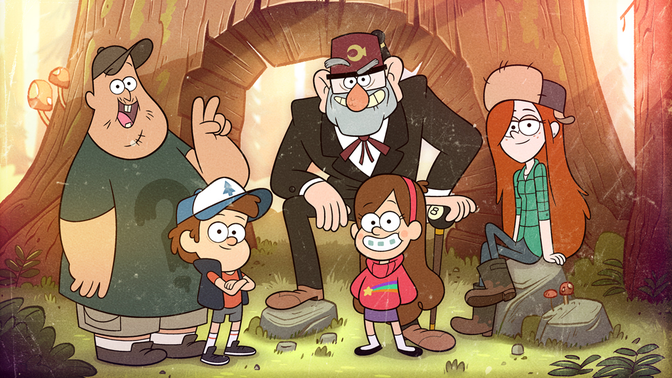Early this year, I wrote an article talking about how crucial it is to write characters who balance two, seemingly opposite characteristics. We looked at how powerful those characters can be, and how easily they avoid becoming yet another overused cliche or falling into a tired troupe.
But not all characters can balance two opposing characteristics. Whether it’s for practical reasons or you simply can’t picture your character as balancing a new, opposing trait, some characters simply aren’t meant to do both.
And that can be dangerous. You risk falling into a troupe or consigning your character to a narrow set of predefined interactions, choices, and emotions. If you can’t picture your character as having a characteristic that is different from all the other characters in their archetype, you may already have written them into a cliche…
Unless you do it on purpose.
So to look at how to write an interesting character without two opposing characteristics making up their personality, we’re going to look at Grunkle (Great-Uncle) Stan from the cartoon TV series Gravity Falls.
Gravity Falls: Grunkle Stan
Grunkle Stan is… a familiar character. You might even have someone like him in your own family. He’s the deadbeat, older uncle with no drive or initiative except possibly that he’d like to get more money as easily as possible. The story opens at the arrival of his great- nephew and niece, Mabel and Dipper Pines, for their annual summer vacation at his Mystery Shack — a cabin in the woods full of fake supernatural specimen and cheaply-made mysterious “artifacts” that Stan uses to rip off tourists. He’s been known to utilize even visits from family to make extra money.
In a cartoon, comedic world, he’s hilarious. He brings some of the best punchlines to the show, and for that he’s not completely irritating. In fact, you don’t mind him being around almost at all, as long as he’s cracking jokes and finding ridiculous ways to rip other people off.
While the main characters solve mysteries around town and attempt to get to the bottom of the supernatural activity the small town of Gravity Falls is famous for, Grunkle Stan gets a very small, very subtle subplot. You discover quite early on in the series that he has a secret passageway behind the vending machine in the lobby of his Mystery Shack. You casually wonder what sort of illegal money-making venture he has hidden behind the vending machine, but there are honestly so many other, more pressing mysteries in the show that Grunkle Stan’s fades into the background.
But then, out of nowhere, the secret behind the vending machine becomes the main focus of the show. By the first season’s finale, all the loose threads and unanswered questions that remain from the season’s mysteries are clearly pointing to whatever Grunkle Stan has hidden behind the vending machine — and it has absolutely nothing to do with money.
Instead, in a secret lair directly under the Mystery Shack, Stan has been working tirelessly on a project he believes could rescue his missing brother. His money, time, and energy has been sacrificed to this project.
And so while he is still deadbeat and greedy, remains essentially selfish, and never fails to con people, you begin to see that there’s a sense of duty behind all of that, and that if he would only use a little self-control, it might grow to make him one of the most selfless characters on the show.
And it does. By the finale of the series, Grunkle Stan willingly sacrifices his life, his memories, his identity, all to save his family. What started out as a regretful obligation he felt he must fulfill has grown to define his entire identity. The deadbeat uncle has become the devoted family man, willing to sacrifice everything for those he’s promised to protect.
And the change (although gradual) is astounding.
The Drastic Character Arc
Grunkle Stan grew from being the punchline of the show to being its hero. No other character went as far as he did to do what was right. And even though all of the characters grow and improve throughout the show, he’s the one who the writers chose to showcase in the climax by giving him the greatest sacrifice of the entire series.
Why? Because character arcs like this are some of the most powerful in all of storytelling. They are worth showcasing.
Most character arcs help a character get rid of their flaw. These are legitimate. We looked at the impact of one just last month through Inside Out. Joy’s journey is powerful, and getting rid of her flaw takes pain and a dramatic difference in her perspective. But it doesn’t completely overhaul her personality.
Consider the impact of having a character whose journey not only removes his flaw, but also turns his entire personality on its head. Consider the impact of having a character who hardly even identifies with the person they were before the story began. Consider shaking the very core of who they are, and letting the result after the dust settles shape everything about them — from their hobbies, their dialogue, and their personal preferences.
Last week we talked about how you can write a flat character arc. Those character arcs are still wonderful, but keep in mind what they emphasize. They give impact to your theme and message, rather than your character’s journey. Themes are often forgotten or underemphasized in literature, so it’s important to highlight how valuable those kinds of character arcs can be. But if you want to emphasize a certain character’s transformation, pick the drastic character arc instead.
You don’t have to introduce these kinds of characters with two opposing characteristics from the very beginning to make them interesting. Instead, let them open the story as the epitome of a certain characteristic (in Stan’s case, greed and selfishness) and then force them to form into the ideal version of the opposing characteristic (in Stan’s case, protecting family at all costs.)
You still use two opposing characteristics to make these characters interesting, you just frame them in a different way. And it creates the most powerful kind of character arc.
Stan’s character arc didn’t just cure his fatal flaw. It made him an entirely new person. And that’s what made him worth highlighting in the climax. So if you want to write a character whose journey stands out like no other, transform them both inside and out by creating an arc that shakes your protagonist’s personality and results in a character who will never look at the world the same way again.



Let us know in the comments:
Have you noticed drastic character arcs in other forms of storytelling? Have you ever tried writing one? Do you like the flat or drastic character arcs better?


Hi! My name is Mara, and I’m a Christian artist, violinist, and blogger. I remember the day that I decided that I would learn something new about what makes a good story from every book I picked up — whether it was good, bad, or a mixture of both. I use this blog as a way of sharing some of the tips and tricks I’ve learned, and highlight which books, cartoons, and movies have taught me the most about writing an awesome story.

